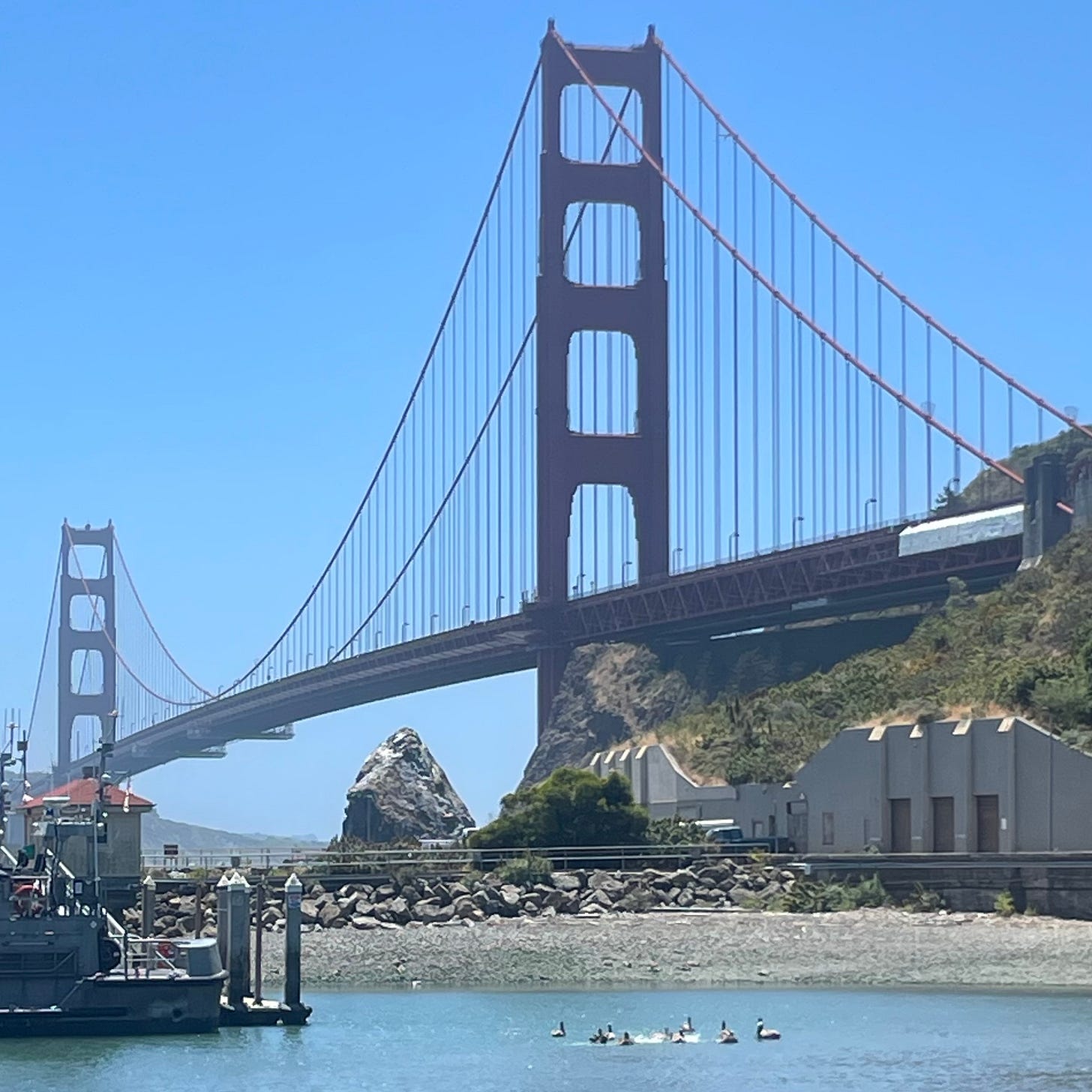As we started getting ready to pack up our things from a day at Shell Beach, my friends and I saw a brown pelican fly to the far corner of the cove where a larger group of people were hanging out. You could tell they were all excited by the bird, intrigued the way we were. The pelican walked up to them, everyone slowly stepping away. A person sitting down rubbing sunscreen on themselves stood up, the bright orange bottle intriguing the pelican. It snapped at the bottle, maybe wanting to eat the orange thing. Concern started to grow, everyone unsure what to do, and no cell service in the area to really call for any sort of help.
I walked over, curious what was going on and to my surprise, as I filmed it, it started to wander toward me. A little girl stood beside me, and The pelican tried to bite at her so I stepped in the way. It seemed to be demanding, not begging, for food. Not having anything for it, and slightly concerned it might have some sort of flu I walked away, but to my surprise it started to follow me back to where my friends and I were. Iit kept its distance, somehow knowing we had nothing for it. Eventually it walked back to the other group, snapping at another person with a bright orange sunscreen bottle.
It was odd. At Shell Beach I’ve seen many wild and beautiful, yet distinct things. Often I’ll see river otters swimming with the currents, the occasional gutsy raven, bat rays—never seen a leopard shark there, but I’ve heard of plenty others seeing them. But never pelicans. They’re more often on the open ocean, closer to where the small fish that they hunt live. But this pelican made it down to Tomales Bay some ten or fifteen miles to this beach, flooded by people on a hot day, attempting to eat everyone or their sunscreens.
The pelican had its adult feathers, meaning it was at least three years old, an elderly age for them to be acting so odd. Was this pelican just used to people and looking for an easy snack? Had this pelican been raised by people and somehow returned back to the wild? Maybe the pelican was sick. I’ve seen some shorebirds acting strangely only later to find out they had avian flu, which is really hurting many species of birds around the world currently.
Someone told me that one of the people in the large group said he’d reported it to the rangers at the park, finding a spot of service.
We packed our things.
Once we got to the car, where I had service, I contacted a couple people I knew at the Point Reyes National Seashore, sending them some photos and videos. They gave me numbers to report the incident. They said it could be sick, or maybe it was used to being fed by people, or it was starving. That had been happening a lot lately.
This odd encounter wasn’t even the strangest sighting of a pelican. In Santa Cruz, one was found trying to walk into a bar. Another was seen in the outfield during a Giants game.
My curiosity spiraled into a week-long search as to what was going on with this pelican. What started out, I thought, as a one off little story, something I could write here on my newsletter, turned into a larger story I ended up writing for the North Bay Bohemian and Pacific Sun on how hundreds of pelicans across the California coast have been starving to death.
While the pelicans are mostly doing better (watch a little video of pelicans being released below), with the help of International Bird Rescue and other nonprofits, this large-scale event remains a combination of a mystery and a concern for the health of the bird's future.
I wasn’t able to find out what happened to the pelican that we saw at Shell Beach, but at least the birds at large seem to be faring better today.
You can read the article on the North Bay Bohemian or the Pacific Sun.
Also, check out International Bird Rescue. They are almost entirely volunteer run, and the work they’ve done helping these pelicans has been greatly taxing on them financially. If you have the ability to give, consider helping out this important Bay Area conservation organization.






